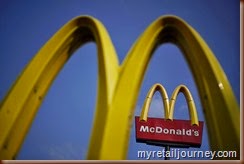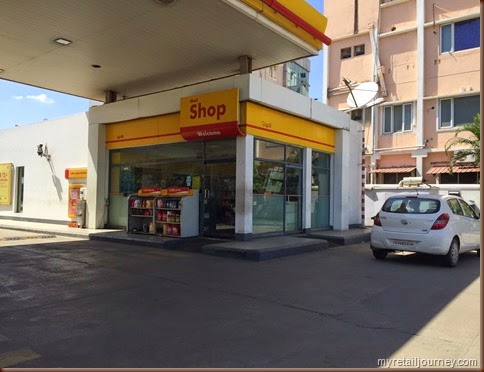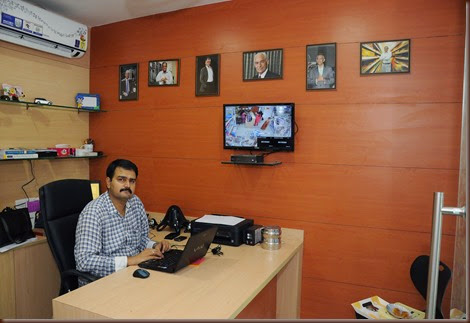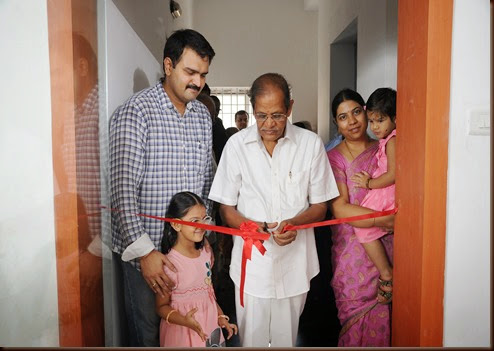01 July, 2015
Are Cafes sustainable?
03 May, 2015
Highway dining is back…
I have travelled extensively (by road) during April 2015 across Karnataka, Kerala and Tamil Nadu. Being a road warrior myself, I love the journey as much as the destination. As age catches up one wants to take frequent breaks – nature’s call, food stop, caffeine, fuel, etc. It’s been difficult to search for good (read hygienic and safe) places, especially when the family is around. It is common to see passengers stop at large fuel stations or one of restaurants on the Highways but then, as I said, one needs to take more breaks to find each of the above mentioned facilities.
Cafe Coffee Day, India’s largest cafe chain has been on a massive expansion and growth spree over the past decade and now has over 1,450 cafes across India and interestingly has over 50 cafes just on the highways. However large this number looks independently, it is indeed a very small share of the immense opportunity that lays ahead. For example, between Chennai and Bangalore, a distance of over 360 km, there are just 4 cafes, 2 on either side of the road. Chennai – Trichy (280km) has just one cafe! Tourist locations such as Virajpet & Madikeri (Coorg), Udupi, Kozhikode Beach, Tanjore BIG Temple, etc. do not have a single cafe in the vicinity. Well, I am not mentioning here about just the CCD chain but any organized F&B player for that matter. With better road conditions and more excitement for road trips among Indians, there seems to be a much larger opportunity on hand than what many Retailers think.
When I read recently that Reliance is planning to open its 1,500 plus fuel stations across the country, I was elated. I have been a regular user of their services when they were operational until 2010 when they had to shut shop most of their fuel stations due to indiscriminate differences in fuel prices between the Govt. controlled OMCs and the private players. However, things have changed ever since 2012 when Petrol prices were dergularised and in 2014, Diesel prices have also been deregularised which is good news for private players like Essar, Reliance and Shell. A1 Plazas, as they were named, Reliance Fuel Stations were as big as football stadiums that had atleast 12 fuel pumps for vehicles, large food courts, both a/c and non-a/c, large open spaces for Car Parking, Garden areas for walking and ofcourse, spic and span rest rooms.
These 1,500 Fuel stations can readily take up 1,500 foodcourts, atleast 500 fast food restaurants such as Mc Donalds and KFC plus 1,000 cafes if not more – that’s a whopping number of new retail outlets to be created. Each foodcourt which could be run by players like A2B (Adyar anandha Bhavan), Haldirams, and so on (essentially local cuisine) can employ about 15 people, the restaurant can employ about 15 and the cafe could employ atleast 10. so, we are talking about creating over 10,000 jobs within the next six months in Organized Retail – that many number of families would get benefited. Being a market leader, Cafe Coffee Day has a massive opportunity to scale-up. Their consistency is not up to the mark of late, one of the perils of massive expansion, but then, no other F&B player has it anyway.
Just 50km outside Chennai, there are several restaurants, fast food outlets and cafes which people are already flocking to. Same is the scene outside Delhi/NCR, Mumbai, Pune and so many other cities. There is one such place called “The Farm” on OMR (Chennai) which raises poultry animals, Horses, Cows and Buffaloes among others.
In a few years from now, I wouldn’t be surprised if many families would be driving for an hour outside their city for a Brunch coupled with leisure activities. Hope F&B players gear up and smell this opportunity, sooner than later.
01 February, 2015
180 Days as an Entrepreneur
I started my entrepreneurial journey exactly six months back from today, on 1st Aug. 2014. The journey has been nothing less than a roller coaster ride. I have always wanted to have a company for myself, but for that to happen in 2014 was based on various conditions at workplace and home. The last six months have been super exciting – everyday has been a revelation. I set foot by creating a retail business for myself, Smiling Baby which is a baby care venture that focuses on a wide range for products aimed at newborn children upto six years of age and catering to the aspirational middle class to shop in an affordable, comfortable and convenient environment. Confluence Retail Private Limited was established on an auspicious occasion – Teacher’s Day, which fell on 5th Sep. 2014. It was a great way of me dedicating my efforts to my teachers and Gurus, my mentors and well wishes and to everyone who have taught me a lesson or two in my personal, professional and public life.
We inaugurated the (physical) retail store on Friday, 26th Sep. 2014 and the venture is seeing good traction. We are currently taking the next big leap of taking the business to the web, but it wouldn’t be yet another E-Commerce store selling diapers and creams at deep discounts but something more engaging and interesting.
Here are some lessons that I learned as an Entrepreneur which I would like to share;
- Time Management – From waking up in the morning to hitting the sack late in the night, time is at our own disposal. What we do with it completely depends on what outcome we expect out of it.
- Results are directly linked to the efforts we put in. Well, its the same while we work somewhere else, but most probably we are working in large or small teams. But as an Entrepreneur, we are working for ourselves and most often alone, or in a short team.
- Blame ourselves when things go wrong; probably try to put the pieces together and find out what went wrong, where and why. No Blame Game – no one to pass on the buck - to juniors, seniors or peers.
- Money Management is key – as important as managing time. While most Entrepreneurs start off with a buffer of savings, what we fail to remember is to keep maintaining or building the buffer from time to time to help you stay longer in the game.
- Trusting those around – this has been a great challenge for me. While we work for large organizations, we believe people will do their job. But when you are on your own, it requires a lot more monitoring and follow-ups.
- Getting compliments from your first time and repeat customers – gives us a high but also makes us to be more and more modest.
Some of the pain points compared to a professional life;
- After being in the Corporate world for a decade and a half, we expect a certain level of professionalism at work, which doesn’t happen in most cases.
- People walk in at their will at your office and expect you to value their time, leaving behind what we have been working upon.
- There is no respect for appointments – in most cases, we are taken for granted since we don’t carry a business card of a popular company!
- Money is always scarce, especially if we are used to a certain lifestyle.
- Friends and Family look up to us differently – as though we are wasting time without pursuing a full time job.
Overall, its been one exciting journey, a very long in terms of knowledge yet a short one in time. I have learned a lot more things in the last six months than in the past six years or so, probably. Setting up your own company, especially in the Retail world which has its own complications from Finance to Supply Chain, Marketing to Operations.
The journey has just begun and I have Miles to Go before I sleep…
16 January, 2015
Breaking fast the traditional way!
31 October, 2014
Hate thread on McDonalds
23 October, 2014
EMIs to the rescue of Retailers
19 October, 2014
The iPhone Saga continues...
A Firefly finally takes off
Monday - 22 Jan. ‘24 is a very important day in my professional life. I complete eight months today in my role as Executive Vice President a...

-
12 December is celebrated annually as Retail Employees Day, an occasion to thank the frontend staff who have taken up Retail as their pref...
-
The world is split into two for the last week or so, ever since India’s self-made billionaire and tech mogul Mr. Narayana Murthy (NRN) said ...
-
It’s been over 5 months since I wrote anything on this blog, especially. Not that I didn’t have anything to observe, even better to share my...


















